|
Books Should Be Free Loyal Books Free Public Domain Audiobooks & eBook Downloads |
|
|
Books Should Be Free Loyal Books Free Public Domain Audiobooks & eBook Downloads |
|
Teen and Young Adult Books |
|---|
|
Book type:
Sort by:
View by:
|
By: Arnold Bennett (1867-1931) | |
|---|---|
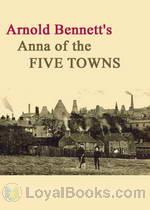 Anna of the Five Towns
Anna of the Five Towns
The plot centers on Anna Tellwright, daughter of a wealthy but miserly and dictatorial father, living in the Potteries area of Staffordshire, England. Her activities are strictly controlled by the Methodist church. Having escaped her father by marrying the respectable and attractive Henry, she attempts in vain to help Willy, son of a drunken and bankrupt business associate of her father's. | |
By: Arthur M. Winfield (1862-1930) | |
|---|---|
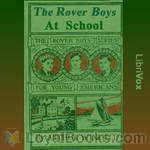 The Rover Boys at School
The Rover Boys at School
First of the famous Rover Boys books by future Hardy Boys creator Edward Stratemeyer (under the pseudonym Arthur M Winfield), this is an introduction to the fun-loving teenage Rover Brothers -- Dick, Tom & Sam. Virtual orphans, they are sent by their prudish Uncle Randolph to a military boarding school and their adventures soon begin! | |
 Rover Boys in the Jungle
Rover Boys in the Jungle
Third entry in the then-popular boys' adventure series has the Rover brothers (Tom, Dick, & Sam) heading to Africa to search for their long-missing father, after a few more adventures at their upstate New York boarding school, Putnam Hall. | |
 Rover Boys Out West
Rover Boys Out West
Despite the title, the Rover Brothers spend several chapters -- over half the book -- back East, against arch-nemeses Josiah Crabtree and the Baxter family. Formulaic fun was dated even by the 1940's when Orson Welles satirized it on the radio. | |
By: Arthur Scott Bailey (1877-1949) | |
|---|---|
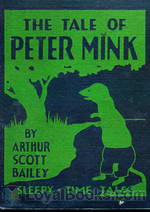 The Tale of Peter Mink
The Tale of Peter Mink
Arthur Scott Bailey (1877 – 1949) was author of more than forty children’s books. Bailey’s writing has been described thusly by the Newark Evening News: “Mr. Bailey centered all his plots in the animal, bird and insect worlds, weaving natural history into the stories in a way that won educator’s approval without arousing the suspicions of his young readers. He made it a habit to never ‘write down’ to children and frequently used words beyond the average juvenile vocabulary, believing that youngsters respond to the stimulus of the unfamiliar.” | |
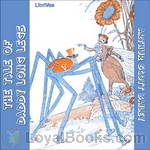 The Tale Of Daddy Long Legs
The Tale Of Daddy Long Legs
Summary text (Arthur Scott Bailey (1877 – 1949) was author of more than forty children’s books. He was born on November 15, 1877, in St. Albans, Vermont, United States, the second child of Winfield Scott Bailey and Harriet Sarah Goodhue. THERE was great excitement in the neighborhood of Farmer Green’s house. Rusty Wren had found some strange tracks. And nobody knew whose they were. Now, when they were puzzled like that the field- and forest-folk usually went straight to Mr. Crow for advice... | |
 The Tale of Timothy Turtle
The Tale of Timothy Turtle
One of Bailey’s “Sleepy-Time Tales,” this is the story of Timothy Turtle, a grumpy old turtle trying to live his life alongside Black Creek. Timothy’s adventures lead him to encounters with other Black Creek creatures, Fatty Coon, Mr. Crow, Brownie Beaver, Peter Mink, Ferdinand Frog, and even the local boy, Johnnie Green. | |
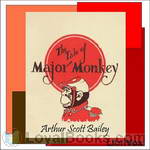 The Tale of Major Monkey
The Tale of Major Monkey
Arthur Scott Bailey was the author of more than forty children’s books.Mr. Bailey centered all his plots in the animal, bird and insect worlds, weaving natural history into the stories in a way that won educator’s approval without arousing the suspicions of his young readers. | |
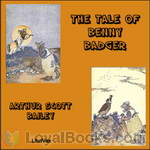 The Tale of Benny Badger
The Tale of Benny Badger
Mr. Bailey centered all his plots in the animal, bird and insect worlds, weaving natural history into the stories in a way that won educator’s approval without arousing the suspicions of his young readers. He made it a habit to never ‘write down’ to children and frequently used words beyond the average juvenile vocabulary, believing that youngsters respond to the stimulus of the unfamiliar.” | |
 The Tale of Master Meadow Mouse
The Tale of Master Meadow Mouse
This volume in the series, Sleepy-Time Tales, follows the adventures of Master Meadow Mouse as he moves his home to various (safer) places, and tells how he cleverly avoids creatures such as Fatty Coon, Mr. Crow, and Mr. Great Blue Heron, just to name a few. | |
 The Tale of Betsy Butterfly
The Tale of Betsy Butterfly
Arthur Scott Bailey (1877 – 1949) was the author of more than forty children’s books. “Mr. Bailey centered all his plots in the animal, bird and insect worlds, weaving natural history into the stories in a way that won educator’s approval without arousing the suspicions of his young readers. He made it a habit to never ‘write down’ to children and frequently used words beyond the average juvenile vocabulary, believing that youngsters respond to the stimulus of the unfamiliar.” (Wikipedia) | |
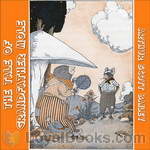 The Tale of Grandfather Mole
The Tale of Grandfather Mole
Arthur Scott Bailey (1877 – 1949) was the author of more than forty children’s books.Bailey’s writing has been described thusly by the Newark Evening News: “Mr. Bailey centered all his plots in the animal, bird and insect worlds, weaving natural history into the stories in a way that won educator’s approval without arousing the suspicions of his young readers. He made it a habit to never ‘write down’ to children and frequently used words beyond the average juvenile vocabulary, believing that youngsters respond to the stimulus of the unfamiliar.” | |
 Tale of Miss Kitty Cat
Tale of Miss Kitty Cat
The rats and the mice thought that Miss Kitty Cat was a terrible person. She was altogether too fond of hunting them. They agreed, however, that in one way it was pleasant to have her about the farmhouse. When she washed her face, while sitting on the doorsteps, they knew—so they said!—that it was going to rain. And then Mrs. Rat never would let her husband leave home without taking his umbrella. As a rule Miss Kitty Cat didn't look at all frightful. Almost always she appeared quite unruffled, going about her business in a quiet way and making no fuss over anything... | |
 Tale of Dickie Deer Mouse
Tale of Dickie Deer Mouse
"All the four-footed folk in the neighborhood agreed that Dickie Deer Mouse was well worth knowing. Throughout Pleasant Valley there was no one else so gentle as he . . . He was always tastefully dressed in fawn color and white. And except sometimes in the spring, when he needed a new coat, he was a real joy to see. For he both looked and acted like a well-bred little person."In one of Bailey's "Sleepy-Time Tales", we follow a polite little mouse called Dickie as he hunts for a summer home, finds food, and avoids various predators... | |
 Tale of Buster Bumblebee
Tale of Buster Bumblebee
Buster Bumblebee and his family move into a new home. Excitement and buzzing abound. Buster meet a strange fellow called a carpenter bee, way too many chirpy crickets, and even finds his own long lost sister. Later in his adventurous life, Buster learns of another kind of Bee, a Raising Bee and how much food is available for everyone there. All in all, this tale will bring smiles and grins to listeners young and old as it tells of Buster Bumblebee, a young bee with a lot to learn but a heart of gold. | |
 Tale of Mrs. LadyBug
Tale of Mrs. LadyBug
Have you ever seen a LadyBug and wondered what the cute little bug with the dots on her back was thinking? And why she seemed in such a rush? Well here is your chance to peek into her thoughts and enjoy some of her daily triumphs and disasters. "Little Mrs. Ladybug was a worker. Nobody could deny that. To be sure, she had to stop now and then to talk to her neighbors, because Mrs. Ladybug dearly loved a bit of gossip. At the same time there wasn't anyone in Pleasant Valley that helped Farmer Green more than she did... | |
 Tale of Henrietta Hen
Tale of Henrietta Hen
The Tale of Henrietta Hen is a cute children's book filled with the adventures of a hen named Henrietta. | |
 Tale of Pony Twinkleheels
Tale of Pony Twinkleheels
"When Johnnie Green sent him along the road at a trot, Twinkleheels' tiny feet moved so fast that you could scarcely have told one from another. Being a pony, and only half as big as a horse, he had to move his legs twice as quickly as a horse did in order to travel at a horse's speed. Twinkleheels' friends knew that he didn't care to be beaten by any horse, no matter how long-legged. "It's spirit, not size, that counts," Farmer Green often remarked as he watched Twinkleheels tripping out of the yard, sometimes with Johnnie on his back, sometimes drawing Johnnie in a little, red-wheeled buggy... | |
By: Arthur Stanwood Pier (1874-1966) | |
|---|---|
 The Jester of St. Timothy's
The Jester of St. Timothy's
| |
By: Asa Don Dickinson (1876-1960) | |
|---|---|
 Good Cheer Stories Every Child Should Know
Good Cheer Stories Every Child Should Know
This charming book has many stories that deal mostly with the holiday of Thanksgiving, perfectly suited for family listening and reading. and gathers in one volume tales of tasty turkeys, festive parties, generous gestures, and holiday cheer. The stories featured include works by such writers as Harriet Beecher Stowe, George Eliot, Nathaniel Hawthorne, and others. So if you want to listen to some great stories that bring out gratitude for life and a thanksgiving attitude, here are a bunch of the best. | |
By: Augusta Huiell Seaman (1879-1950) | |
|---|---|
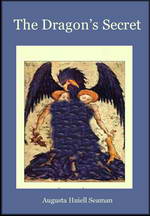 The Dragon's Secret
The Dragon's Secret
Sixteen year old Leslie Crane has come to the New Jersey shore as a companion to ailing Aunt Marcia, whose doctor has sent her there for a some quiet rest and recuperation. While the beach is lovely in October, Leslie quickly finds herself getting lonely with no one her own age to talk to. Little does she realize that she will not only soon make a new friend, but that they will both end up in the midst of a puzzling mystery centered around the closed up bungalow next door. Augusta Huiell Seaman is the author of over 40 historical fiction and mystery novels for older children most of which are currently out of print. The Dragon’s Secret was originally published in 1921. | |
By: Augustine D. Crake (1836-1890) | |
|---|---|
 Edwy the Fair or the First Chronicle of Aescendune A Tale of the Days of Saint Dunstan
Edwy the Fair or the First Chronicle of Aescendune A Tale of the Days of Saint Dunstan
| |
By: Aunt Fanny (1822-1894) | |
|---|---|
 The Little Nightcap Letters
The Little Nightcap Letters
| |
 The Fairy Nightcaps
The Fairy Nightcaps
| |
 The Big Nightcap Letters Being the Fifth Book of the Series
The Big Nightcap Letters Being the Fifth Book of the Series
| |
By: Aunt Friendly | |
|---|---|
 Hatty and Marcus or, First Steps in the Better Path
Hatty and Marcus or, First Steps in the Better Path
| |
By: Barbara Hofland (1770-1844) | |
|---|---|
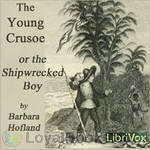 The Young Crusoe, or The Shipwrecked Boy
The Young Crusoe, or The Shipwrecked Boy
The Young Crusoe, or The Shipwrecked Boy (1829) Novel. At the novel's opening, Charles Crusoe, thirteen years of age, asks his mother if he is related to the famous Robinson Crusoe, and is told that he is not. His future adventures, however, strongly resemble those of the earlier Crusoe. | |
 The Barbadoes Girl
The Barbadoes Girl
Matilda Sophia Hanson, whose father has recently died in their country of Barbadoes in the West Indies, must live for a time with family friends in England. The Harewood family is astonished at how spoiled, rude, and uneducated the child is. However, with seemingly endless patience and love, they help Matilda work to conquer her bad temper, and become a sensible, good, and well-informed young lady. This story reminds children and adults alike, though you have many battles with yourself, you must never relinquish hope and be assured you will find every victory easier than the last... | |
By: Barbara Yechton (1864-1939) | |
|---|---|
 We Ten Or, The Story of the Roses
We Ten Or, The Story of the Roses
| |
By: Beatrix Potter (1866-1943) | |
|---|---|
 The Tale of Peter Rabbit
The Tale of Peter Rabbit
| |
 The Tale of Squirrel Nutkin
The Tale of Squirrel Nutkin
| |
 The Tale of Timmy Tiptoes
The Tale of Timmy Tiptoes
| |
 The Tale of Mr. Tod
The Tale of Mr. Tod
| |
 The Tale of Mrs. Tittlemouse
The Tale of Mrs. Tittlemouse
| |
By: Bertha B. (Bertha Browning) Cobb (1867-1951) | |
|---|---|
 Clematis
Clematis
| |
By: Bessie Marchant (1862-1941) | |
|---|---|
 The Adventurous Seven Their Hazardous Undertaking
The Adventurous Seven Their Hazardous Undertaking
| |
By: Beth Bradford Gilchrist (1879-1957) | |
|---|---|
 The Camerons of Highboro
The Camerons of Highboro
| |
By: Bloomfield H. Moore (1824-1899) | |
|---|---|
 Frank and Fanny
Frank and Fanny
| |
By: Bracebridge Hemyng (1841-1901) | |
|---|---|
 Jack Harkaway and His Son's Escape from the Brigands of Greece
Jack Harkaway and His Son's Escape from the Brigands of Greece
| |
 Jack Harkaway's Boy Tinker Among The Turks Book Number Fifteen in the Jack Harkaway Series
Jack Harkaway's Boy Tinker Among The Turks Book Number Fifteen in the Jack Harkaway Series
| |
By: Bret Harte (1836-1902) | |
|---|---|
 The Queen of the Pirate Isle
The Queen of the Pirate Isle
| |
By: Brother Ernest Ryan (1897-1963) | |
|---|---|
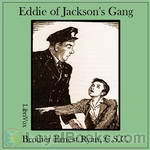 Eddie of Jackson's Gang
Eddie of Jackson's Gang
Eddie. That is the only name our young, musically talented hero knew for himself. After being left at a Catholic orphanage as a young child, at the age of nine he is unwittingly adopted into a gang of thieves. Will he be able and maintain his innocence and escape their clutches? And will he ever be able to discover his true parentage?Brother Ernest Ryan was a Holy Cross Brother, the founder of and a prolific author for the Dujarie Press, a Catholic publishing house of Juvenile Saint books for children in the 1950’s and 1960’s. He wrote numerous juvenile biographical saint books for children, as well as several children's fictional titles – of which this is one. | |
By: Burbank L. Todd | |
|---|---|
 Hiram the Young Farmer
Hiram the Young Farmer
| |
By: C. A. (Charles Asbury) Stephens (1844-1931) | |
|---|---|
 When Life Was Young At the Old Farm in Maine
When Life Was Young At the Old Farm in Maine
| |
 Left on Labrador or, The cruise of the Schooner-yacht 'Curlew.' as Recorded by 'Wash.'
Left on Labrador or, The cruise of the Schooner-yacht 'Curlew.' as Recorded by 'Wash.'
| |
By: C. F. Argyll Saxby | |
|---|---|
 The Fiery Totem A Tale of Adventure in the Canadian North-West
The Fiery Totem A Tale of Adventure in the Canadian North-West
| |
By: C. F. Fraser | |
|---|---|
 Master Sunshine
Master Sunshine
| |
By: C. H. (Charles Henry) Pearson (1824-1906) | |
|---|---|
 The Cabin on the Prairie
The Cabin on the Prairie
| |
By: C. J. Dennis (1876-1938) | |
|---|---|
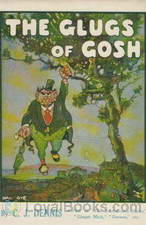 The Glugs of Gosh
The Glugs of Gosh
First published in 1917, The Glugs of Gosh satirizes Australian life at the start of the twentieth century – but the absurdities it catalogs seem just as prevalent at the start of the twenty-first. The foolishness of kings, the arrogance of the elite, the gullibility of crowds, the pride of the self-righteous, the unthinking following of tradition – all find themselves the targets of C. J. Dennis’ biting wit. | |
By: C. S. Sleight | |
|---|---|
 An Arrow in a Sunbeam and Other Tales
An Arrow in a Sunbeam and Other Tales
| |
By: Calista McCabe Courtenay | |
|---|---|
 George Washington
George Washington
In this biography for young people, Calista McCabe Courtenay takes the reader from George Washington the surveyor to his early military career, first as a colonel in the Virgina militia and then as a member of General Braddock'a staff during the French and Indian War. He later commanded the Virginia forces before joining the First Continental Congress. Much of the book is devoted to his campaigns during the American Revolution. At the end, we see him as President for two terms. | |
By: Carey Rockwell | |
|---|---|
 Stand by for Mars
Stand by for Mars
Tom Corbett - Space Cadet was one of the first multimedia sensations. In the 1950s the character had his own radio show, TV series, comic book, breakfast cereal, and a line of young-adult novels. A cross between "Tom Brown's School Days" and Horatio Hornblower (and loosely based upon Robert A. Heinlein's novel "Space Cadet"), the books follow the adventures of Tom and his friends Roger Manning and Astro as they work their way through Space Academy to become officers of the Solar Guard. Along the way they tangle with space pirates, smugglers, and the threat of demerits for breaking the rules... | |
 Danger in Deep Space
Danger in Deep Space
| |
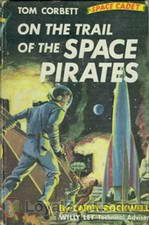 On the Trail of the Space Pirates
On the Trail of the Space Pirates
Tom Corbett is the main character in a series of Tom Corbett — Space Cadet stories that were depicted in television, radio, books, comic books, comic strips, and other media in the 1950s. The stories followed the adventures of Corbett and other cadets at the Space Academy as they train to become members of the Solar Guard. The action takes place at the Academy in classrooms and bunkrooms, aboard their training ship the rocket cruiser Polaris, and on alien worlds, both within our solar system and in orbit around nearby stars... | |
 Sabotage in Space
Sabotage in Space
This book is part of the on-going adventures of Tom Corbett in the Space Cadet Stories. Tom, Astro and Roger are determined to find the saboteurs but get framed in the process, risking court martial and expulsion from the Space Academy. NOTE: Carey Rockwell is a pseudonym used by Grosset & Dunlap. It is unknown who wrote the books. | |
By: Caroline Elliott Hoogs Jacobs (1835-1916) | |
|---|---|
 Blue Bonnet in Boston or, Boarding-School Days at Miss North's
Blue Bonnet in Boston or, Boarding-School Days at Miss North's
| |
By: Caroline Hadley | |
|---|---|
 Woodside or, Look, Listen, and Learn.
Woodside or, Look, Listen, and Learn.
| |
By: Carolyn Wells (1862-1942) | |
|---|---|
 Patty's Summer Days
Patty's Summer Days
| |
 Patty's Friends
Patty's Friends
| |
 Patty's Success
Patty's Success
| |
 Patty's Social Season
Patty's Social Season
| |
 Patty Blossom
Patty Blossom
| |
 Marjorie's Busy Days
Marjorie's Busy Days
| |
 Marjorie at Seacote
Marjorie at Seacote
| |
By: Carroll Watson Rankin (1864-1945) | |
|---|---|
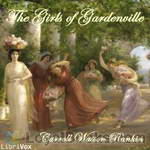 The Girls of Gardenville
The Girls of Gardenville
It is pleasant to have another book about a group of merry, natural girls, who have the attractions of innocence and youthful faults. "The Sweet Sixteen" Club made fudge, and went on picnics, and behaved just as jolly, nice maidens should. (The Outlook, vol. 82, Mar. 24, 1906) | |
By: Catharine Parr Strickland Traill (1802-1899) | |
|---|---|
 Little Downy The History of A Field-Mouse
Little Downy The History of A Field-Mouse
| |
By: Charles Alexander Eastman (1858-1939) | |
|---|---|
 Indian Child Life
Indian Child Life
The author was raised as an American Indian and describes what it was like to be an Indian boy (the first 7 chapters) and an Indian Girl (the last 7 chapters). This is very different from the slanted way the white man tried to picture them as 'savages' and 'brutes.'Quote: Dear Children:—You will like to know that the man who wrote these true stories is himself one of the people he describes so pleasantly and so lovingly for you. He hopes that when you have finished this book, the Indians will seem to you very real and very friendly... | |
By: Charles Amory Beach | |
|---|---|
 Air Service Boys Flying for Victory or, Bombing the Last German Stronghold
Air Service Boys Flying for Victory or, Bombing the Last German Stronghold
| |
 Air Service Boys in the Big Battle Or, Silencing the Big Guns
Air Service Boys in the Big Battle Or, Silencing the Big Guns
| |
By: Charles Bruce | |
|---|---|
 Leslie Ross: or, Fond of a Lark
Leslie Ross: or, Fond of a Lark
| |
By: Charles Dickens (1812-1870) | |
|---|---|
 Captain Boldheart & the Latin-Grammar Master
Captain Boldheart & the Latin-Grammar Master
| |
By: Charles Edward Rich | |
|---|---|
 A Voyage with Captain Dynamite
A Voyage with Captain Dynamite
| |
By: Charles H. Bennett (1829-1867) | |
|---|---|
 The Faithless Parrot
The Faithless Parrot
| |
 The Frog Who Would A Wooing Go
The Frog Who Would A Wooing Go
| |
By: Charles Henry Lerrigo (1872-1955) | |
|---|---|
 The Boy Scout Treasure Hunters The Lost Treasure of Buffalo Hollow
The Boy Scout Treasure Hunters The Lost Treasure of Buffalo Hollow
| |
By: Charles Lamb | |
|---|---|
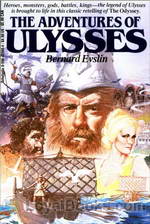 The Adventures of Ulysses
The Adventures of Ulysses
In The Adventures of Ulysses, Charles Lamb re-tells the story of Ulysses’s journey from Troy to his own kingdom of Ithaca. The book uses Homer’s The Odyssey as the basis for the story, but it isn’t a direct translation of the Greek classic. The book is considered a modern version of the epic tale when it was published in 1808. In the preface of the book, Lamb said that he made the narration of the story faster so that more readers would be attracted to it. To begin with, Homer’s Odyssey is already a classic and in re-telling this story, Charles Lamb aimed to make this epic poem more comprehensible to the average person... | |
By: Charles Neufeld (1856-1918) | |
|---|---|
 Under the Rebel's Reign
Under the Rebel's Reign
| |
By: Charles Winslow Hall (1843-1916) | |
|---|---|
 Adrift in the Ice-Fields
Adrift in the Ice-Fields
| |
By: Charlotte B. Herr (1875-1963) | |
|---|---|
 How Freckle Frog Made Herself Pretty
How Freckle Frog Made Herself Pretty
| |